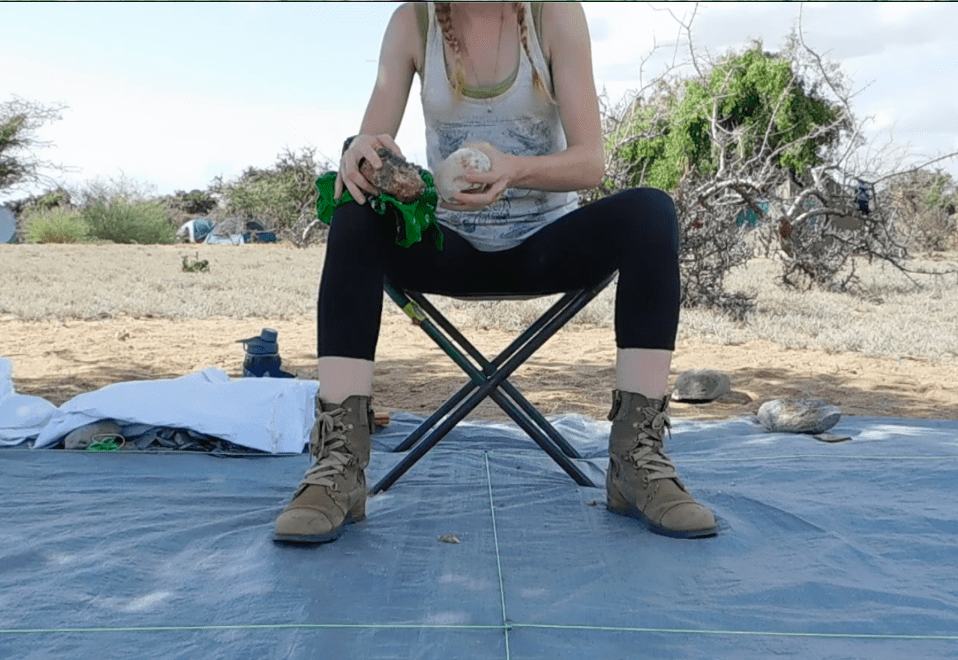![[Two large sperm cells are coiled up next to each other within a male’s testis (photo by Romano Dallai).]](https://blogs.iu.edu/sciu/files/2023/02/bifurca_sperm.jpg)
The drive to reproduce has led to many of the flashiest traits observed in nature. For instance, male deer use antlers to fight one another for access to female mates, while male peacocks display their extravagant tails to impress peahens. These are examples of sexually selected traits, or traits that increase reproductive success. Sexually selected traits evolve because they increase “fitness”…
Tag: evolution
Biases of the fossil record
![[Mounted statue of a Triceratops fossil at a museum. People can be seen in the background looking at a wall of fossils. ]](https://blogs.iu.edu/sciu/files/2022/06/Triceratops_mount-biases.jpg)
As scientists, we strive to reduce error and bias as much as possible. But as a paleontologist, I need to be aware of the biases I can’t reduce. The fossil record is inherently biased. Not everything that dies becomes a fossil. Not every fossil has been found. Not every fossil stays intact well enough to study. These biases in the fossil record come in many forms and are studied under the branch of paleontology known as taphonomy…
Grey wolves can be black? Recent trail camera footage shows a pack of black wolves in Minnesota
![[A black wolf stands in snow, facing left. It is looking at the camera. There is snow on its muzzle and back leg.]](https://blogs.iu.edu/sciu/files/2022/05/black-wolf-sciu-yell-pic.jpg)
Recently, a trail camera in northern Minnesota caught video of a pack of all-black wolves. The video has been viewed more than 950,000 times since it was uploaded in late December 2021. A greyish-brown wolf crosses the meadow in the shot, followed by three all-black wolves. People are fascinated. So, what affects animal coloration? And why are these wolves black?
The new beast in our backyards
![[Reddish brown coywolf in the snow. It has partially turned to face the camera.]](https://blogs.iu.edu/sciu/files/2022/02/coyote-face-snow_-_virginia_-_forestwander-1.jpg)
Watch out, Hoosiers! There’s a new predator afoot. Thirty to forty-five pounds, hungry, mobile, and travelling up to 15 miles per day — coywolves are Indiana’s newest predators! A quick note on terms — since the early 1900’s, the term ‘coywolf’ has described a hybrid animal from a wolf and a coyote. The mid-2000’s saw the rise of wolf-coyote-dog hybrids across North America. These creatures are widely called ‘coywolves.’ All uses of ‘coywolf’ or ‘coywolves’ in this article refer to the latter. Scientists are still somewhat divided on whether these triple-hybrids are a separate species…
The tale of anthropology’s sweetheart: Lucy
![[An artist’s rendering of two Australopithecus afarensis. They are both standing upright and are partially covered in black hair all over their bodies. One is grabbing a low tree branch.]](https://blogs.iu.edu/sciu/files/2020/11/aafarensis_h.jpg)
The skeleton known as Lucy is arguably the most recognizable specimen of the modern human lineage. Anthropologists have used her remains to learn about the behavior and anatomy of Australopithecus afarensis, a member of the modern human lineage, as well as evolution in general. While she is one of the most famous and recognizable skeletons to the general public, she is also beloved in the field of anthropology.
An Archaeological Introduction to Coding in Python

Programming skills are not only becoming more in demand in industry jobs, they’re also becoming a required skill in academia as well. Programming is now used in almost every discipline for tasks such as data collection, organization, and analysis. In this post, I’m going to demonstrate how some basic programming in Python can be used… Read more »
Back to the Stone Age: Why study primate archaeology?

This is the first installment of the Primate Conversation Series. You can read parts two and three here! In 1960, Jane Goodall observed a chimpanzee, whom she named David Greybeard, deep in the Tanzanian jungle using a stick to fish for termites. This discovery was the first documented observation of a chimpanzee using tools in… Read more »
Can science be value-free? The “gap” argument

If scientists are in the business of facts, is there still space for human values? Like many other scientists-in-training, I used to think of the sciences as ideally free from societal values, such as environmentalism and feminism. Sure, our ethical or political biases might guide what scientists study or how others use that knowledge. But,… Read more »
When the things we can’t see matter: the plant vs. environmental change edition

Farmers are facing new challenges in the age of global change. Drought is a major stressor for crops in Indiana and other regions of the U.S. and is forcing farmers to face the question: to irrigate or not to irrigate? Irrigation equipment is incredibly expensive, but is often the best quick solution to water crops… Read more »
Kissing, hand holding, and somatotopic organization in the brain

Have you ever wondered why humans express affection by kissing and hand holding? As with most things in life, the more you think about it, the weirder that it seems. Here’s an interesting insight from neuroscience that is fun to think about next time you decide that you want to over-analyze your love life even… Read more »